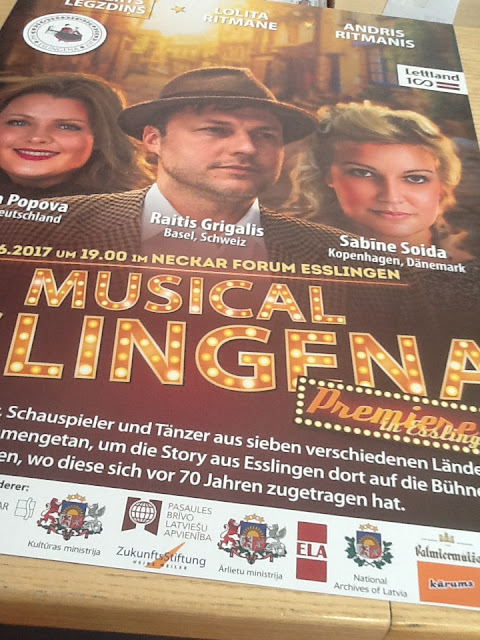,
When I wrote my post about journeying to Esslingen to
commemorate the 70th anniversary of the first Song & Dance
Festival held outside of Latvia, I never imagined such an over-whelming
response to my story.
My mum was 15 when her family fled Soviet occupied Latvia in
1944. The family members who were unable
to escape the encroaching Red Army were deported to Siberia. Three generations gone. Eleven members of my family that I never had
an opportunity to meet. A grandmother
and grandfather whose only “crime” was to be Latvian born. A bedridden aunt who was deemed “unfit” for
harsh labour and abandoned at the side of the road by the Red Army somewhere in
the Siberian tundra. A six year old
child clutching her mother’s hand, unaware of the horrors that awaited her in a
Soviet labour camp.
This is my story, but it is also that of the thousands of
Latvians who were forced to either flee their homeland or risk possible
deportation to Siberia. Leave everything
and flee west towards freedom and an uncertain fate. Not all survived. My mum’s family fled from Tukums to
Liepaja. West towards Danzig,
Germany. Across the frigid sea in a
German ship, with the roar of Russian artillery hovering overhead. Into the hands of an unknown future. They ended up having to escape twice. The first time from Soviet occupied
Latvia. The second time from the Soviet
occupied zone in Germany.
Esslingen was the largest of the displaced persons camps and
“home” to over 7,000 Latvian refugees. My
mum’s family was sheltered in a much smaller camp, in the north of Germany,
hundreds of miles from Esslingen. I grew
up hearing about life in the camp. About
rationed food, limited medical supplies, schools, folk dance and theatre
groups, the spirit of community and the burning desire to forge on, re-build
and start anew.
The road to freedom is paved with determination, tears, loss
and sorrow, yet the Latvian soul is resilient and strong and soldiers stoically
on.
Maintaining strong cultural traditions is ingrained in the Latvian psyche. Literature, art, music and song are tantamount in sustaining as well as providing much needed nourishment for one's soul.
Maintaining strong cultural traditions is ingrained in the Latvian psyche. Literature, art, music and song are tantamount in sustaining as well as providing much needed nourishment for one's soul.
And this is why travelling to Esslingen so moved me.
I stepped back into the past and understood the magnitude of
their sacrifices. I longed for my
parents to tell me more and more and more of what they had been through, even
though I had heard their stories hundreds of thousands of times before. Yet, it wasn’t enough. It’s never enough. There is always so much more to be heard as
well as told.
As quick as a blink of an eye and my parents were gone. It's been well over thirty years. Were they ever here? Or, are they somewhere, still mired in the quicksand of the past?
Yet, what remains is significant. Important. Lives lived and lost. Freedom fought. Precious memories and so much more...
Yet, what remains is significant. Important. Lives lived and lost. Freedom fought. Precious memories and so much more...
It is my obligation and duty to remember for them.
This is now my story and I am the keeper of their histories.
Next post: Stay tuned!!
0
comments


































